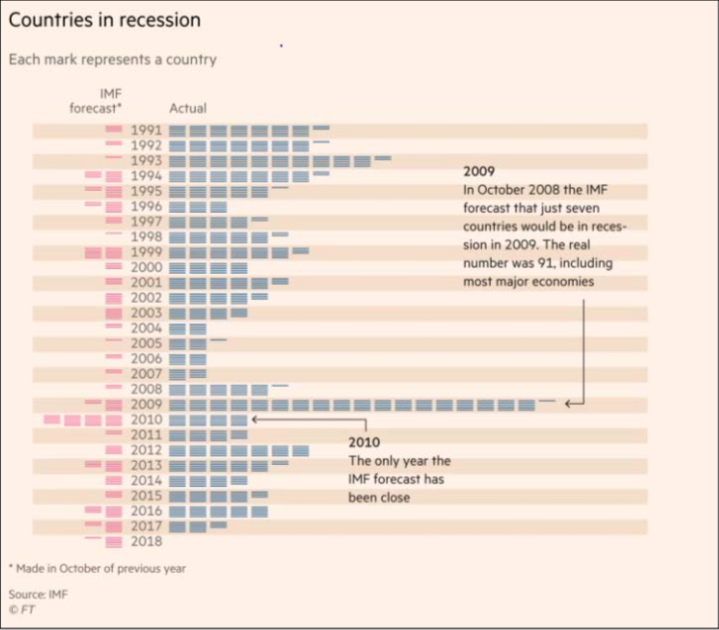Making Sense of Economic Forecasting
We are coming to the end of 2018, and the forecasters are busy with their 2019 predictions for just about every facet of the economy. But how did those predictions from 2018 fare? Let’s take a look at a few of them.
S&P 500
Below is a chart of predictions made in December 2017 by some of the most well-known banks about where their experts thought the S&P would be at the end of 2018. They range from 2,650 to 3,000. Currently, the S&P sits around 2,418 and with a week left to go, it doesn’t look like any of these will pan out.
 Source: Bloomberg (December 2017)
Source: Bloomberg (December 2017)
Unemployment
At the start of 2018, unemployment was around 4.1% and many predicted that it would go lower during the course of the year. It did. The unemployment rate is about 3.7% now and employers are having a difficult time filling their vacancies, which has ramped up competition among them for workers. Might this have an effect on wages?
Wages
Another prediction; “speaking to CNBC at Goldman Sachs’ European headquarters in London, Goldman’s Chief Economist Jan Hatzius outlined an average hourly earnings growth forecast of 3 percent for 2018, compared to 2.5 percent over 2017.” However, according to the Bureau of Labor and Statistics, from October 2017 to October 2018, real hourly wages for all workers increased by only 0.7%
.
The International Monetary Fund (IMF)
The International Monetary Fund, an entity of the United Nations headquartered in Washington D.C., is an organization of 189 countries. They monitor macroeconomic issues including money systems and as well as financial and economic policies of its members while fostering cooperation among them to promote economic growth and reduce poverty around the globe.
Every April and October, the IMF assesses the economic outlook of each member and makes predictions as to which countries may go into a recession. Back in April 2018, the Financial Times took the time to analyze the predictions of the IMF from 1991 to the present (April 2018 at the time).
The chart below compares the IMF’s predictions of how many countries, each represented by a short line, would be in recession each year to the reality and they found that the IMF predictions never matched, but they came close, once.

Source: IMF (data), ©Financial Times
While these are just a few of the predictions, they demonstrate, if not the difficulty, then the perils of making a judgement call on something as complicated as the economy. Almost always there are unforeseen factors that surface later that can have a big impact. Those who work in the finance sector or economy should come to learn that they need to expect the unexpected. Even the best educated and experienced have difficulty, especially the further out one tries to predict.
Educating investors to understand how the unexpected shifts can affect the markets and the ways in which assets can be allocated can make a huge difference over the long-term. This is a better investment of time than trying to figure out where the market will be in one or five years.
Also, asset allocation, or the mix of high-, medium-, and low-risk investments, has shown to be more important than selecting this stock or that one. For long-term investment, the composition of assets has shown to play the largest role in portfolio growth.
It’s important to remember that asset allocation should be highly individualized, and never static. A good mix of investments is based on age, current financial situation, and your goals, and because these are ever changing, your allocations should be too!
Live Life On Your Terms
Whether you want to travel more, do things you’ve always wanted to do, or just spend more time with the grandkids, we want to be your guide to help you get there.
Live Life On Your Terms
Whether you want to travel more, do things you’ve always wanted to do, or just spend more time with the grandkids, we want to be your guide to help you get there.

